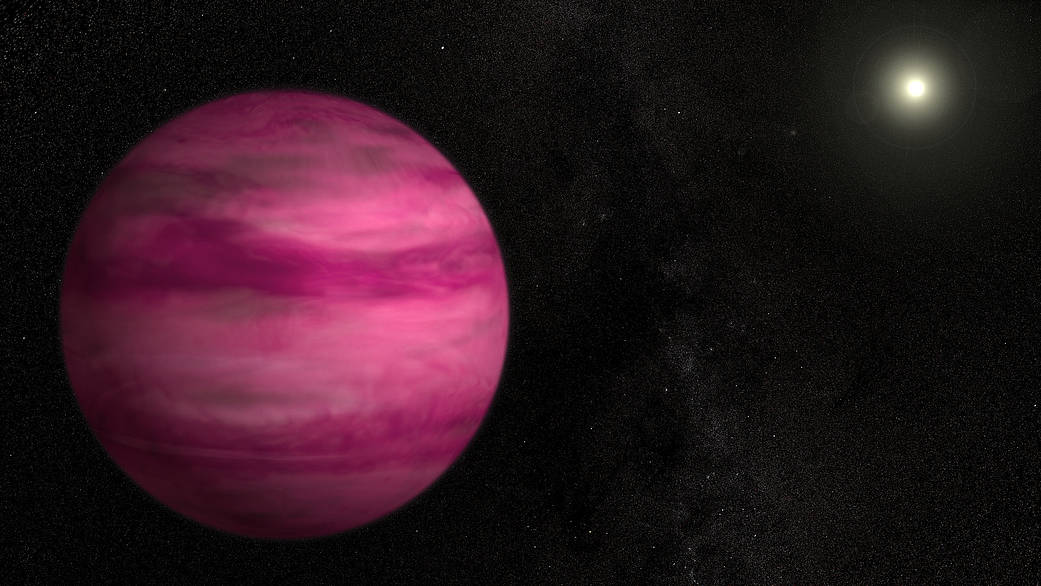If humans could travel to this giant planet, we would see a world still glowing from the heat of its formation with a color reminiscent of a dark cherry blossom, a dull magenta.
Using infrared data from the Subaru Telescope in Hawaii, astronomers discovered this gas giant orbiting a bright star named GJ 504 in 2013. Several times the mass of Jupiter and similar in size, the new world, dubbed GJ 504b, is the lowest-mass planet ever detected around a star like the sun using direct imaging techniques.
GJ 504b is about four times more massive than Jupiter and has an effective temperature of about 460 degrees Fahrenheit (237 Celsius). It orbits the G0-type star GJ 504, which is slightly hotter than the Sun and is faintly visible to the unaided eye in the constellation Virgo. The star lies 57 light-years away and researchers estimate the system is about 160 million years old, based on methods that link the star’s color and rotation period to its age.
Image Credit: NASA/Goddard Space Flight Center/S. Wiessinger
如果人类可以来到这个巨大的星球,我们会看到一个仍然在炽热的环境中发光的世界,它的颜色让人想起了暗红色的樱花。
2013年,天文学家利用夏威夷斯巴鲁望远镜的红外数据发现了这颗气体巨星,它围绕着一颗名为GJ 504的明亮恒星运行。这颗被命名为GJ 504b的新行星的质量是木星的几倍,大小与木星相似,是迄今为止通过直接成像技术探测到的围绕类似太阳的恒星运行的质量最低的行星。
GJ 504b的质量约为木星的四倍,有效温度约为460华氏度(237摄氏度)。它绕着G0型恒星GJ 504旋转,该恒星比太阳稍热,在室女座中肉眼几乎看不见。这颗恒星距离我们有57光年,研究人员根据将该恒星的颜色和自转周期与年龄相联系的方法,估计该系统已有1.6亿年的历史。
影像来源:NASA/Goddard Space Flight Center/S. Wiessinger








天文知多少
天文知多少